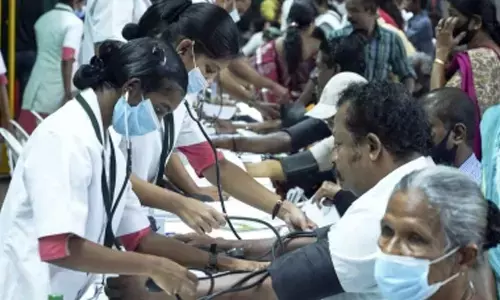Insurance mitigates risk

When we start investing, we define finite goals and approach it with vigor We draw up various strategies to make money while reducing risk we come with various analysis to pull out what our risk tolerance is and even arrive at various risk mitigating tactics like stoploss or range beyond which to act Also, we create a portfolio that would have diversification strategies to participate across m
When we start investing, we define finite goals and approach it with vigor. We draw up various strategies to make money while reducing risk. we come with various analysis to pull out what our risk tolerance is and even arrive at various risk mitigating tactics like stop-loss or range beyond which to act. Also, we create a portfolio that would have diversification strategies to participate across market opportunities.
What we generally ignore is other risks that could impact the overall plan like that of the health and life risks. For instance, if an investor has been accumulating savings for a long-term goal and suddenly one of their family members is sick and needs hospitalisation either of short or prolonged nature. Now, one would not really worry how much would the treatment cost but would first address this need. If required would liquidate the investment, all or part of it, and use it to address this to the immediate nature of the requirement at hand.
Yes, the individual recovers and probably is back to normal but the portfolio or investment plan is no more anywhere to normal or to the earlier levels. Its not the quantum of money withdrawn that hurts the portfolio returns but the time value of the money which is the most critical part of compounding that would otherwise add to the portfolio. For example, a Systematic Investment Plan (SIP) in a mutual fund (MF) of Rs 500 per month for a period of 60 years would actually accumulate to close to Rs 19 crore while double the amount i.e. Rs 1,000 per month in half the time i.e. 30 years would merely create a little over Rs 56 lakh, both the cases assumed at annualised returns of 15 per cent.
What if the very individual did not completely recover and has acquired a permanent disability. This would not only cripple the investment but also puts question mark on the future, both immediate and long as the ability of the investor being productive (if the affected member is the investor them self) or even to include the cost of taking care of this unplanned event and also recovering the lost ground. It turns into a herculean task.
Another case in consideration, is the loss of life of the individual or the earning member of the family, then the loss would completely topple all the planning done till then. Though this is an extreme event, the loss is also the most debilitating of all. Certainly, no amount of financial help would compensate for an emotional loss of an individual in the family. But what is concerning is the loss of the key individual of the family causes an immediate shock to the family and puts cloud over their future. One is to recover the immediate loss and the more painful is to spring back to life and resume the earlier plan of life.
In all the three cases, the risk is concerned with disease, disability and death; all of which are of high probability in any living human. And all these risks could partly or completely alter the further course of an individual or family’s life and thus the goals. Fortunately, there are enough risk extenuating procedures and insurance is a prominent way to counter this effect. Life insurance covers the extreme risk of death, the disability insurance would comprehensively cover the risk of disability through disease or disease.
Moreover, an add-on feature of personal accident insurance to cover from risks through accidents, compensation in the event of disability (temporary or permanent), the cost of treatment/hospitalisation and the loss of income during the phase. The critical illness insurance concentrates on risks that arise due to any of the most incapacitating events due to on-set of certain illnesses and compensate for the loss of productivity or income thereof.
Health insurance takes care of the costs of hospitalisation and the other related expenses during illness. The treatment, pre and post-hospitalisation costs and also covers unplanned shoot-up due to the complications arising during a procedural treatment. Optimal planning includes in not just looking for investment risks and risk tolerance from these investment decisions, but also in effective plugging-in of leaks that could cause due to these events.
(The author is a co-founder of “Wealocity”, a wealth management firm and could be reached at [email protected])
















